60 years of Camping magazine
In February 1961, the UK had an estimated 1.5 million campers. It was the perfect time to launch the first ever magazine aimed at this growing army of outdoor lovers.
Popular Camping, as it was called back then, gave readers all the information they needed to choose the right tents and equipment for their adventures, as well as advice on where to go and essential camping skills.
In some ways, things have changed a lot since then. Tents and equipment are massively different, for a start. And we’ve changed, too.
These days we’re more than simply a print magazine; we reach almost one million people across our online, digital and social media platforms. But what hasn’t changed is our knowledge and expertise and that’s why we remain a trusted voice for campers like you.
Celebrate our 60th birthday with a FREE digital copy of the very first issue of Camping magazine. Sign up here and you'll be sent a link to download Issue No. 1
SWINGING 60s
The 60s weren’t quite swinging in February 1961, but it wouldn’t be long. Just a few days before our first issue appeared on the newsstands, John F Kennedy was sworn in as president of the USA. Later in the month, the Beatles performed at the famous Cavern Club in Liverpool under that name for the first time and the classic 60s TV show The Avengers hit the small screens.
In the camping world, tents were divided into two camps, as it were. Families stayed in canvas frame tents – big and bulky and difficult to transport and pitch – while solo campers and couples opted for ridge tents – much smaller, traditional-shaped tents with room to sleep and little else. Brands like Bukta, with links going back as far as the Boer War, dominated the market.
For the most part, tents weren’t much different in price to today – costing around £30 (more than £400 in today’s money). A fully equipped trailer tent could set you back more than £300, the equivalent of £4,300 today.
It’s tempting to think of camping furniture as a new invention of the “glamping” era, but even back in the sixties, kitchen units were an important part of your family camping kit. The Kamp Kitchen for example was ideal for storing your Spam, Heinz Salad Cream and tins of mulligatawny soup.
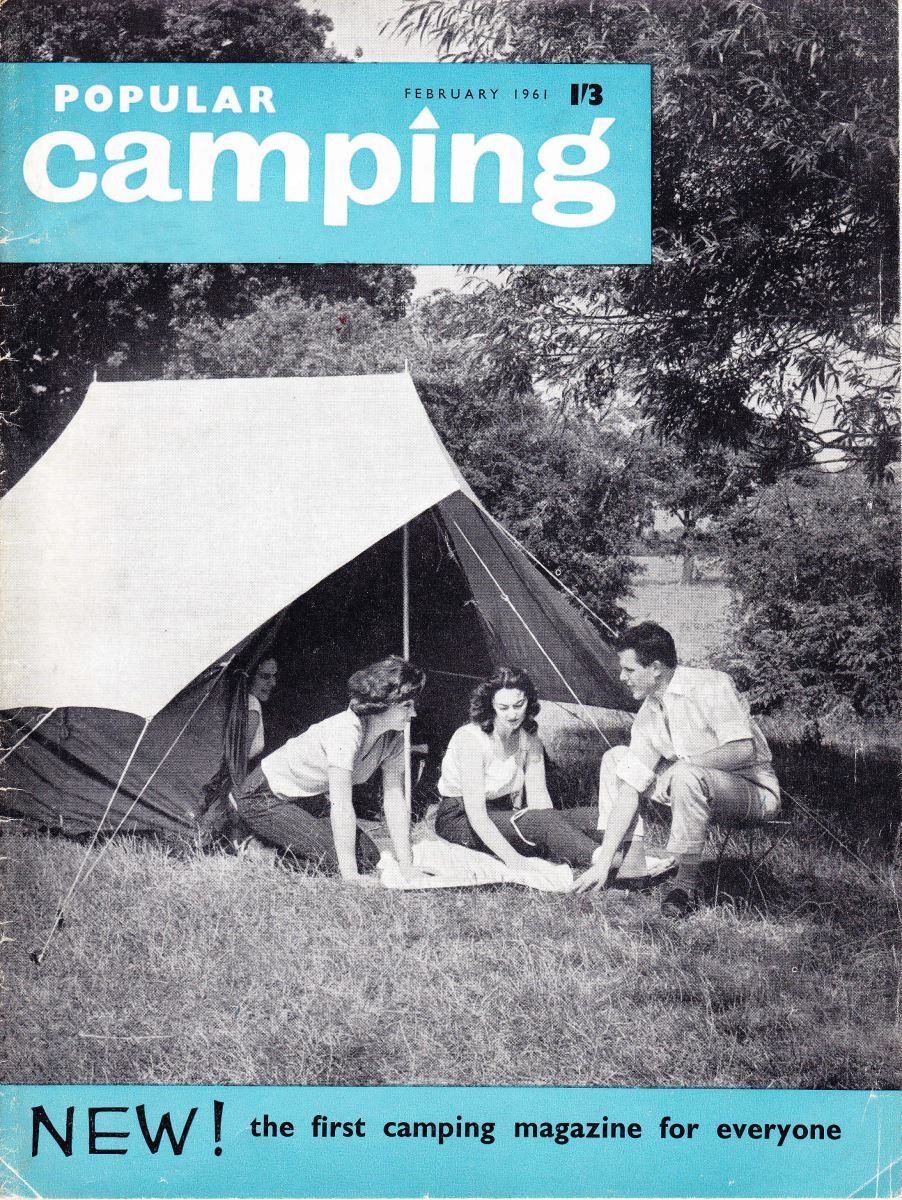
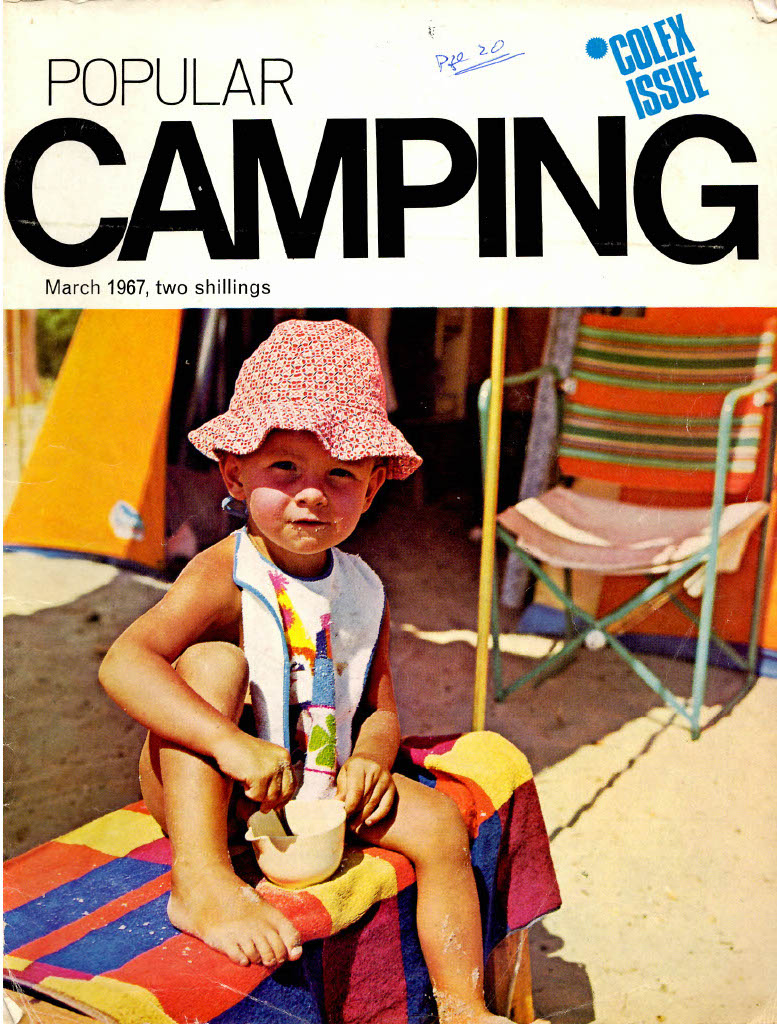
To the modern camper, perhaps the most surprising tent you’ll see on the pages in the 60s is the PTC Igloo – an early inflatable. These ‘pneumatic’ tents first appeared in the 1930s, believe it or not, a good 80 years before Vango launched its groundbreaking AirBeam range.
Foreign package holidays were starting to take off in a big way in the 60s, and the camping world was keen not to miss out on the new craze for overseas travel. Sun, sea, and sangria were tough to compete with but as one magazine advert pointed out, with a tent you could take your “desirable accommodation” with you in the boot of your car. “A new vista is opened up,” said the ad. “The world is your oyster. That continental holiday you’ve dreamed about can become a reality because camping is the cheapest way”.
For “10 guineas” a week (around £150 today), a family of four could enjoy a week in a “luxuriously appointed” three-roomed tent at one of 10 top European sites.
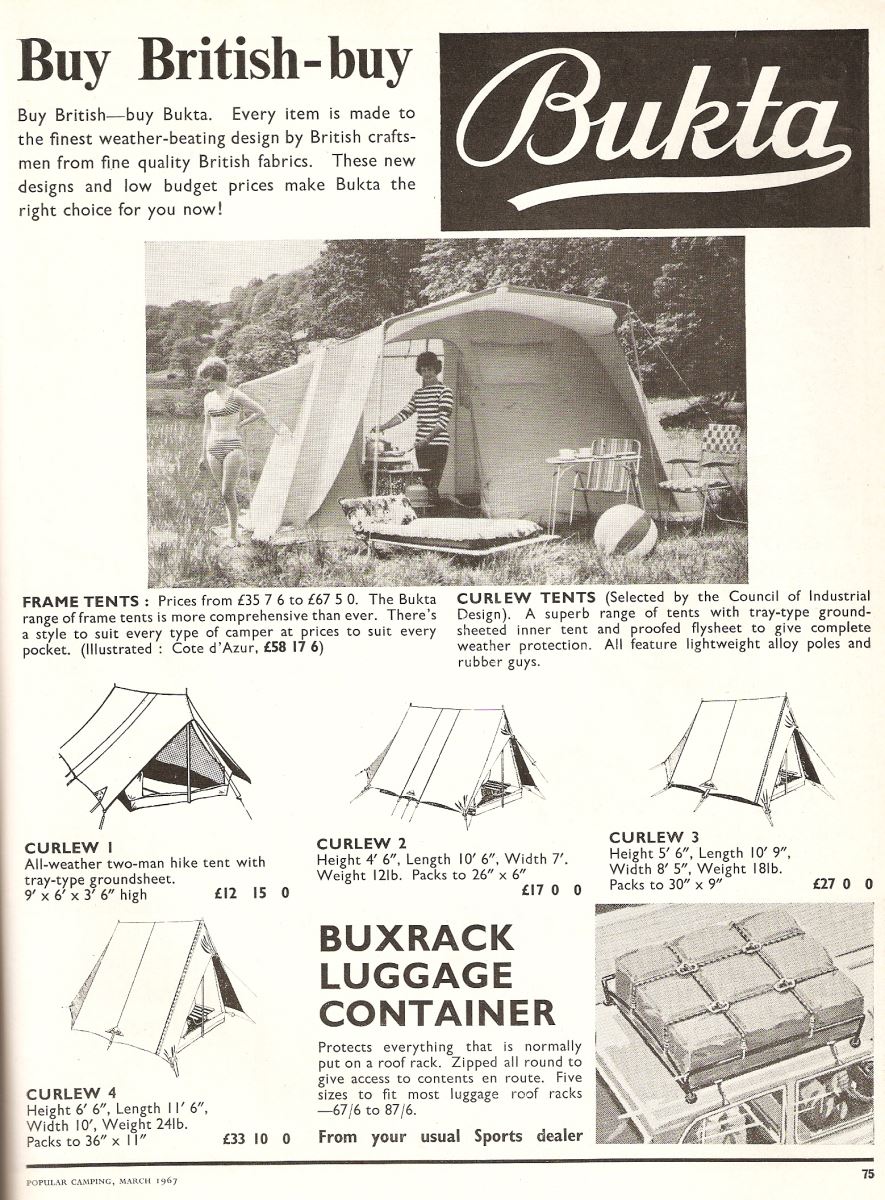
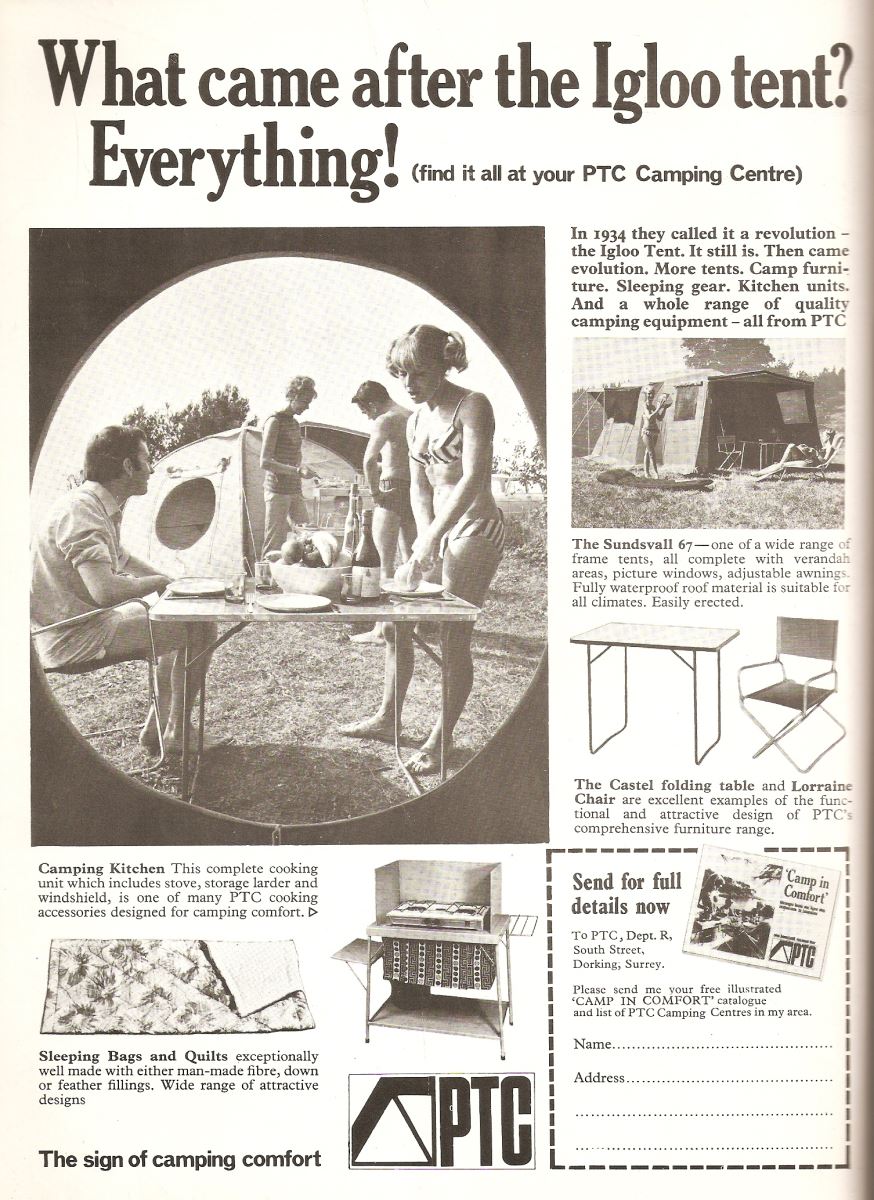
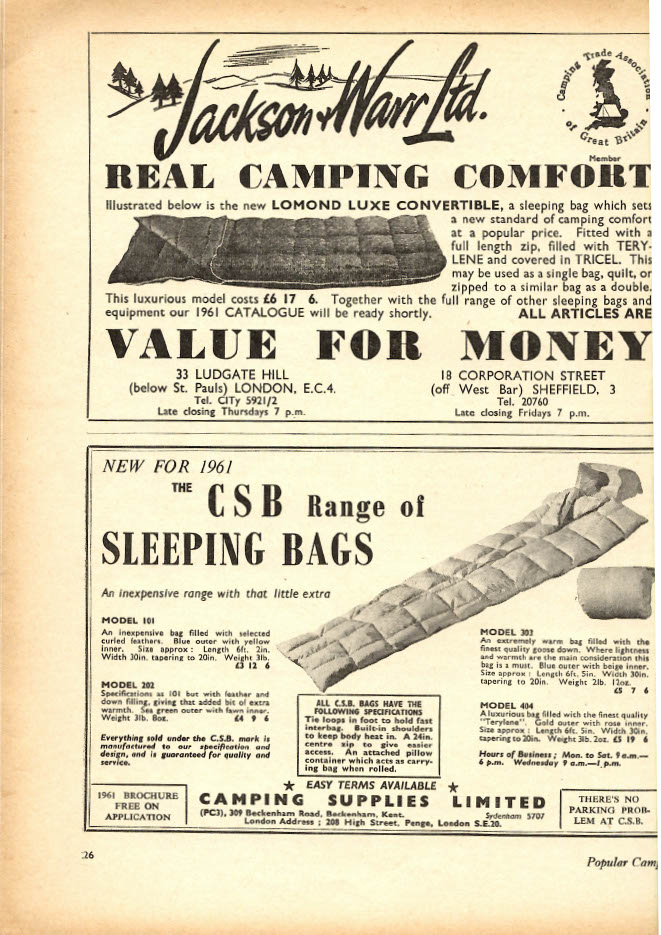
SENSATIONAL 70s
The 1970s was the decade that fashion forgot. Flared trousers so voluminous you could camp in them, clumpy shoes and massive sideburns were everywhere, including the pages of Camping (the Popular was dropped from our title in 1970).
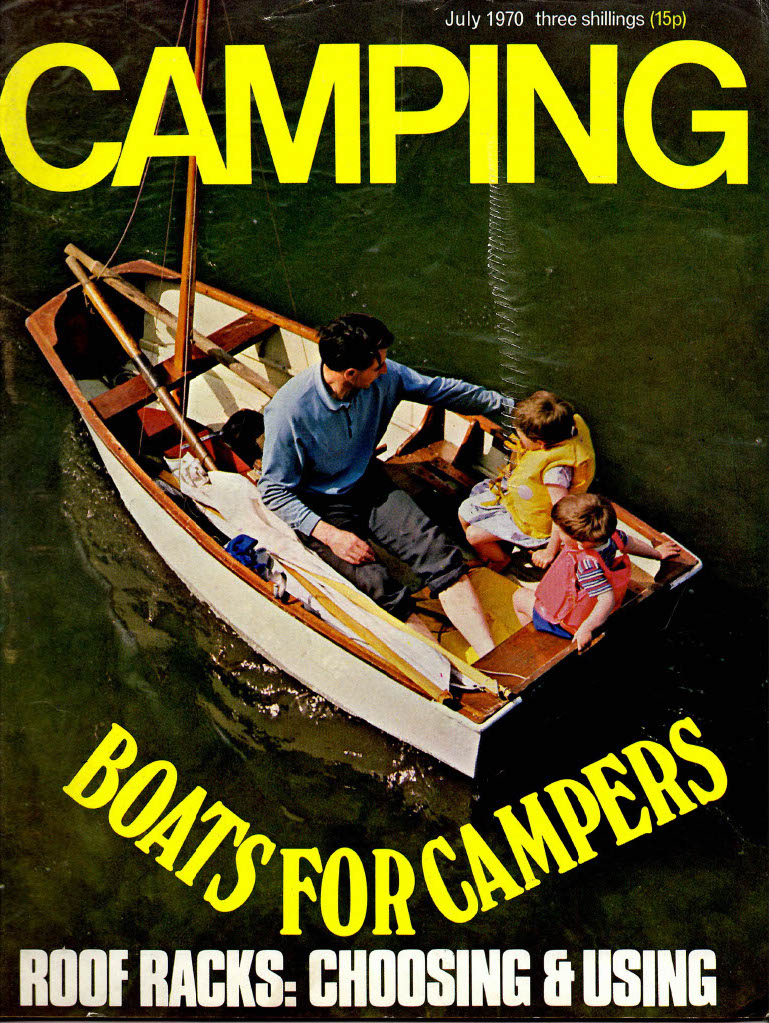
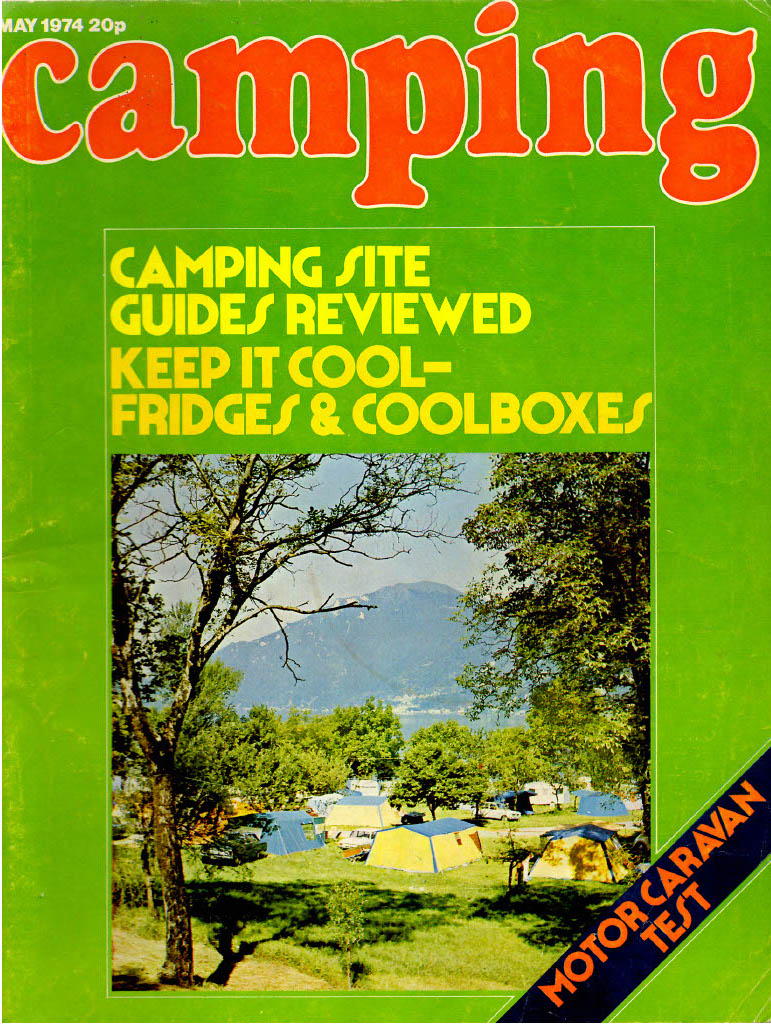
Among the tents for sale in camping retailers like Blacks were offerings from the likes of Vango, Lichfield, Marechal, Jamet, Raclet and OBI. Not to mention the slightly dubious-sounding Europleasure range, whose advertising featured scantily clad ‘dolly birds’ puffing away on cigarettes and boasted of Bell End extensions.
Tent technology had progressed, with materials like nylon and polyester taking over from heavy cotton and canvas and aluminium poles replacing wood. Tents were now lighter, easier to put up and more weather-resistant.
You might think of the 70s as a time when camping was much simpler and cheaper than it is today, but that wasn’t really the case. A six-berth ‘Family Luxe’ frame tent by Blacks of Greenock would have set you back £195 – which doesn’t sound too bad until you consider that would equate to around £1,600 in today’s money.
The cost of a camping pitch was generally much cheaper than today, though. Many sites didn’t charge at all for a tent and would simply charge you per person. At Byrness Camping Club in Northumbria, for instance, campers paid just 18p per night – around £1.50 today.
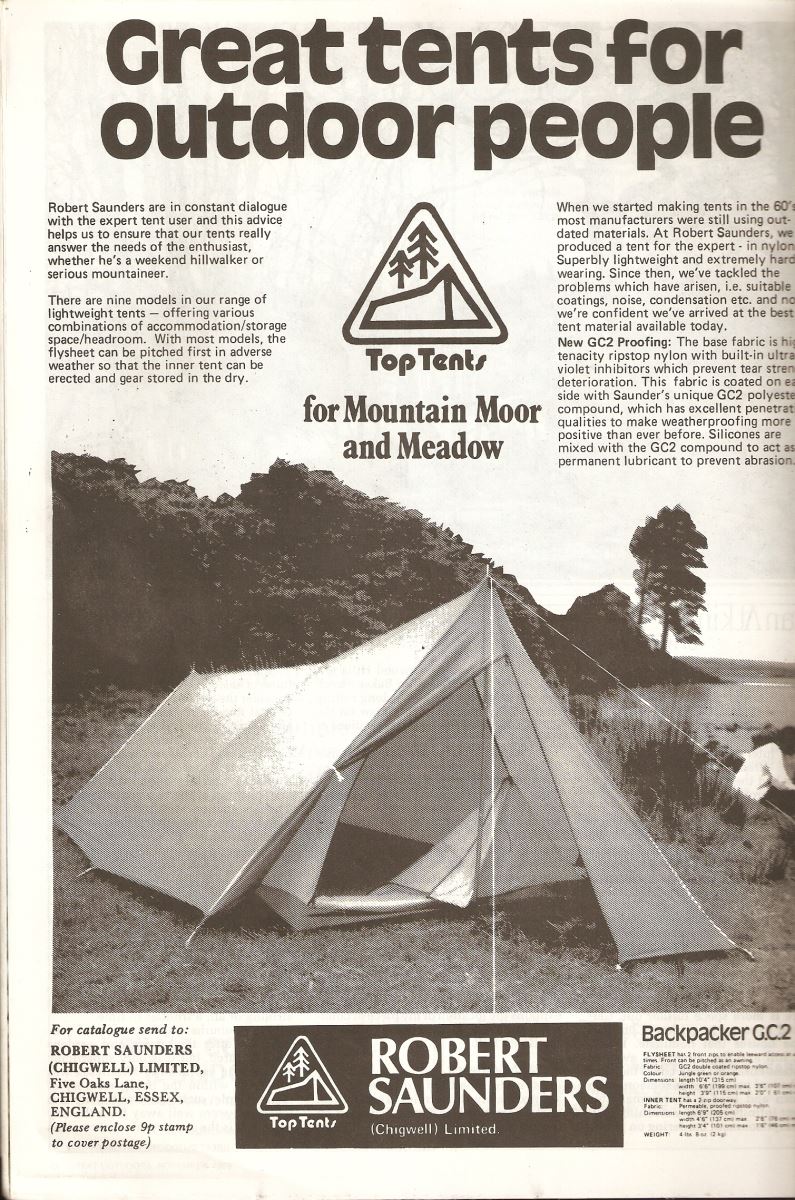
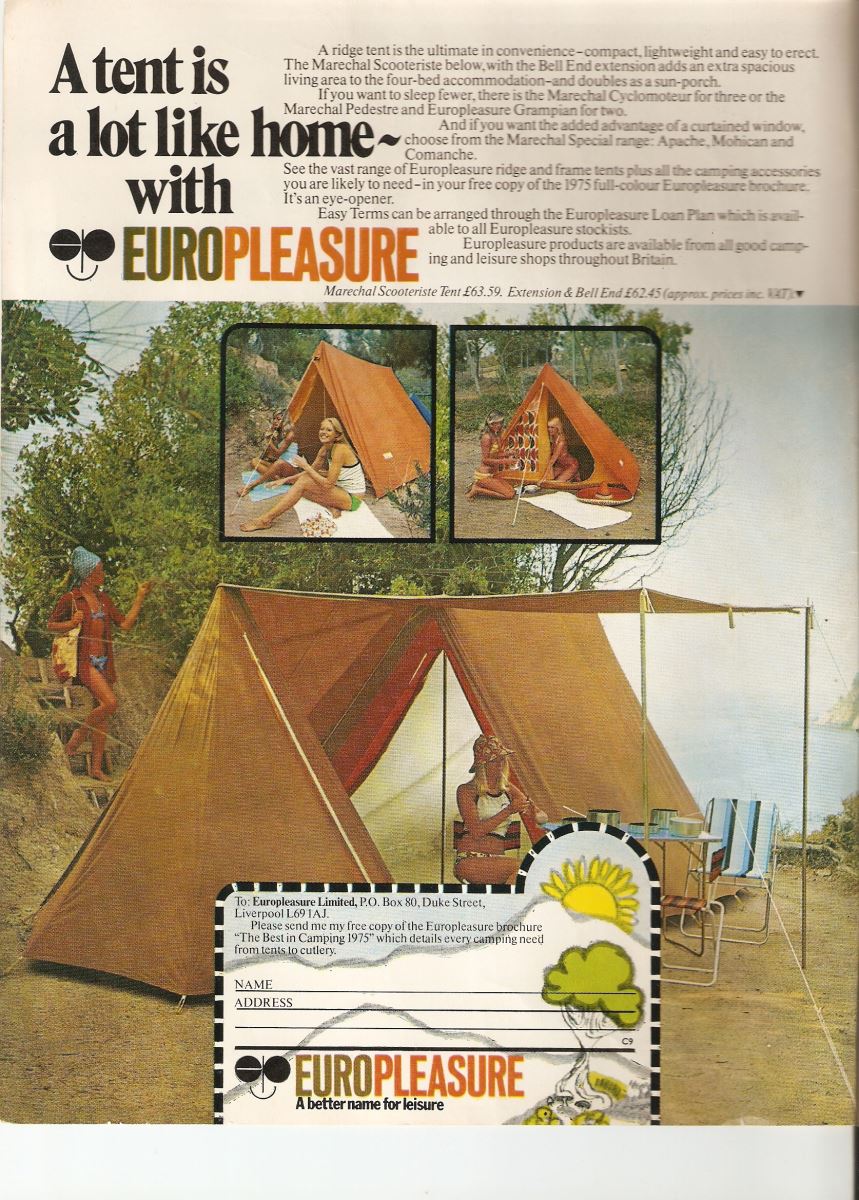
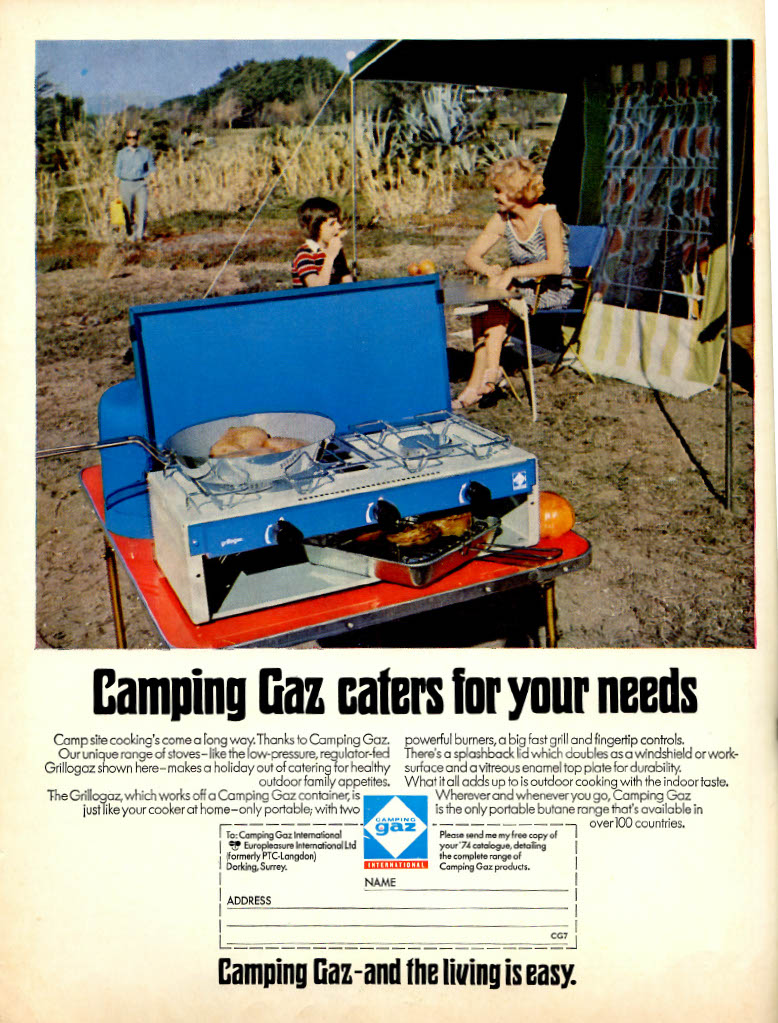
Sometimes it’s hard to see why particular innovations catch on and others don’t. The Campajet was a fresh water pump system that allowed you to have running water in your tent, rather than having to pour from a large container. Not a bad idea, you might think, but not one that has really stood the test of time.
Camping with dogs is always a controversial issue and it seems it’s nothing new. Back in 1975, Camping magazine correspondent, E Waring, from Liverpool (surely not rugby commentator Eddie Waring?) was concerned at the need to clean up after dog owners. We presume he meant clean up after the dogs rather than the owners. As he pointed out, “Even the most avid dog-lovers should realise the health hazard created by man’s best friend”.
AWESOME 80s
The eighties was the era of beige cars, giant mobile phones and big shoulder pads. But it wasn’t all bad news.
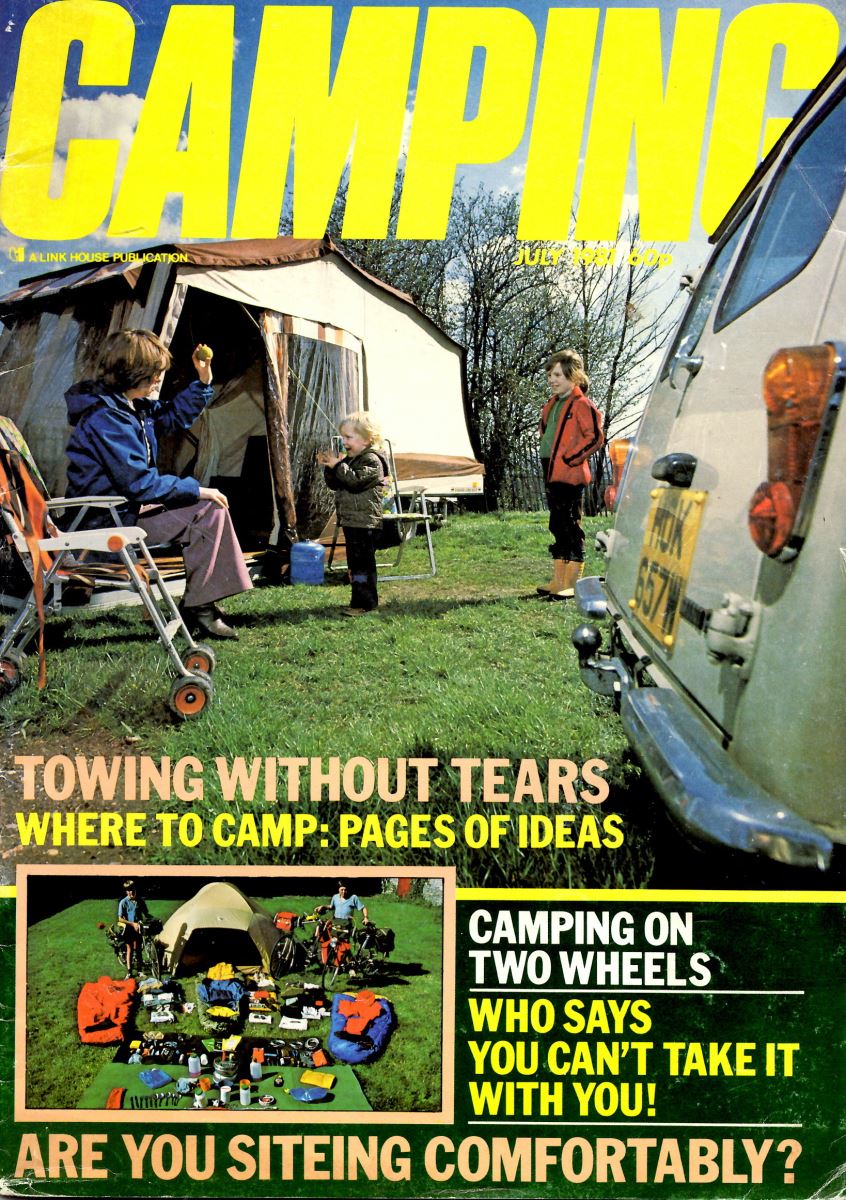
So while you might go to Taunton Camping, Field and Trek or Tiso to pick up something from Vango, Saunders, The North Face, Wild Country or Ultimate, you now also had the option to visit your local branch of Argos instead.
Camping accessories were also becoming more user-friendly, although many of the “lightweight” rucksacks on the market were more akin to small refrigerators than today’s compact models.
Lightweight tent innovator Bob Saunders is a legendary name in British camping. In 1985 he launched one of his most famous models, the futuristic Space Packer.
DIGITAL 90s
With the end of the century looming, camping was beginning to undergo changes in the 90s.
Family camping was becoming far more accessible than it had been in the past. Bulky frame tents were on the way out and being replaced with large dome tents, that were much easier to transport and pitch.
Flicking through the pages of Camping magazine it’s surprising how many recognisable names there were among the manufacturers. Vango, Khyam, Sunncamp, Vaude, Wild Country, Outwell and Coleman are still with us but others like Saunders, Ariel, Freeman and Conquest have fallen by the wayside.
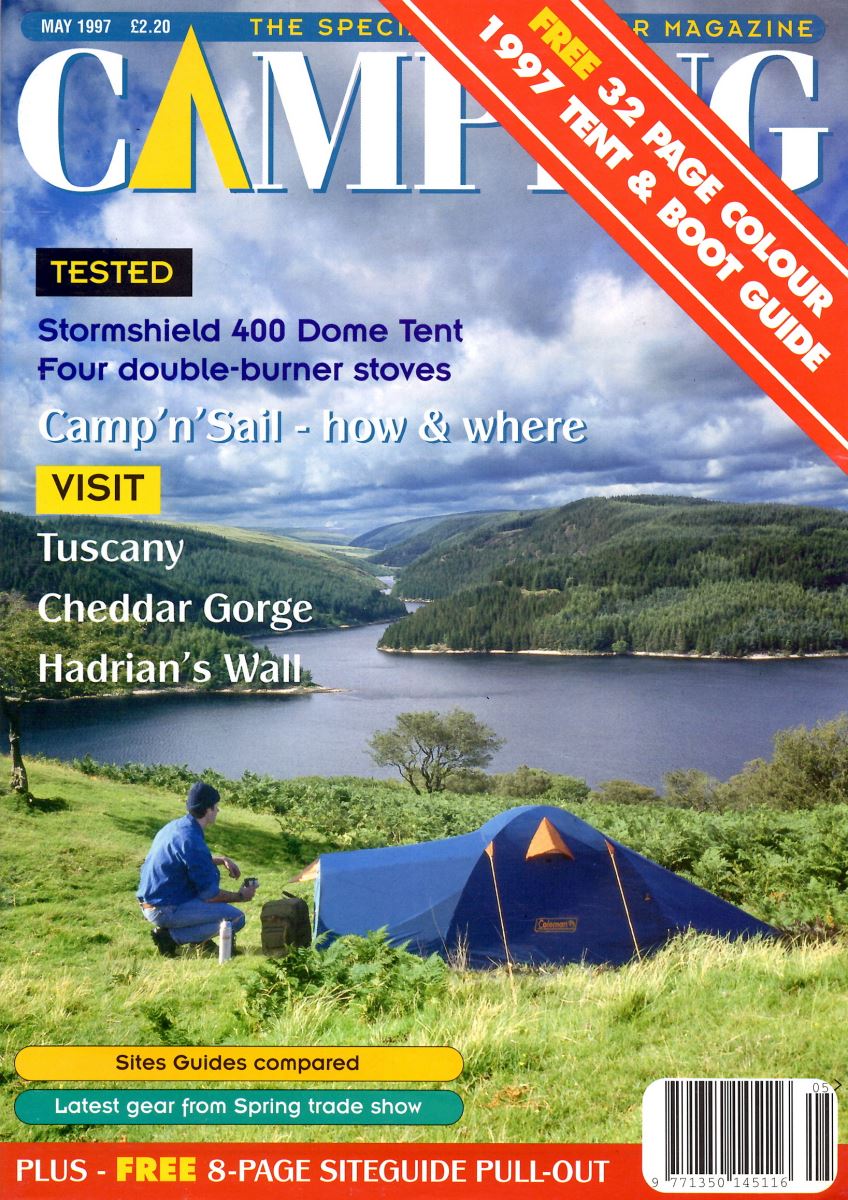
Khyam introduced the Ridgi-Dome range of easy-pitch tents in 1998, using the unique ‘quick erect system’. The tents ranged from two-berth to 10-berth and were advertised as providing increased height and storage as well as being simple to put up.
The internet was in its infancy in the late 90s but camping was beginning to make its mark online. Apparently, in 1998 there were 1,200 mentions of ‘camping’ on the world wide web (a Google search today throws up around three billion!). A mag feature on this baffling new world warned: “Although messages are usually genuine, some can be hostile, racist, pornographic and bigoted.” Some things never change…
Naturism was a big thing in 1998 (careful now – Ed) and even Camping got in on the act, with a four-page feature of nudist camping in France – but don’t worry, there’s no chance of the current editor stripping off for the cameras.
THE NEW MILLENNIUM
It seems a bit strange to describe the 2000s as history. After all, it was just a couple of years ago, wasn’t it? No way, that’s impossible… 20 years ago, you say! Where has the time gone?
It might not seem that long ago, but camping has changed a fair bit even in the last two decades. There were plenty of familiar names in the shops, like Sunncamp, Khyam, Outwell, Easy Camp, Vango and Coleman. But while tunnel tents are now the most common style of tent on UK campsites, back in the early 2000s, domes were by far the most popular family tent around.
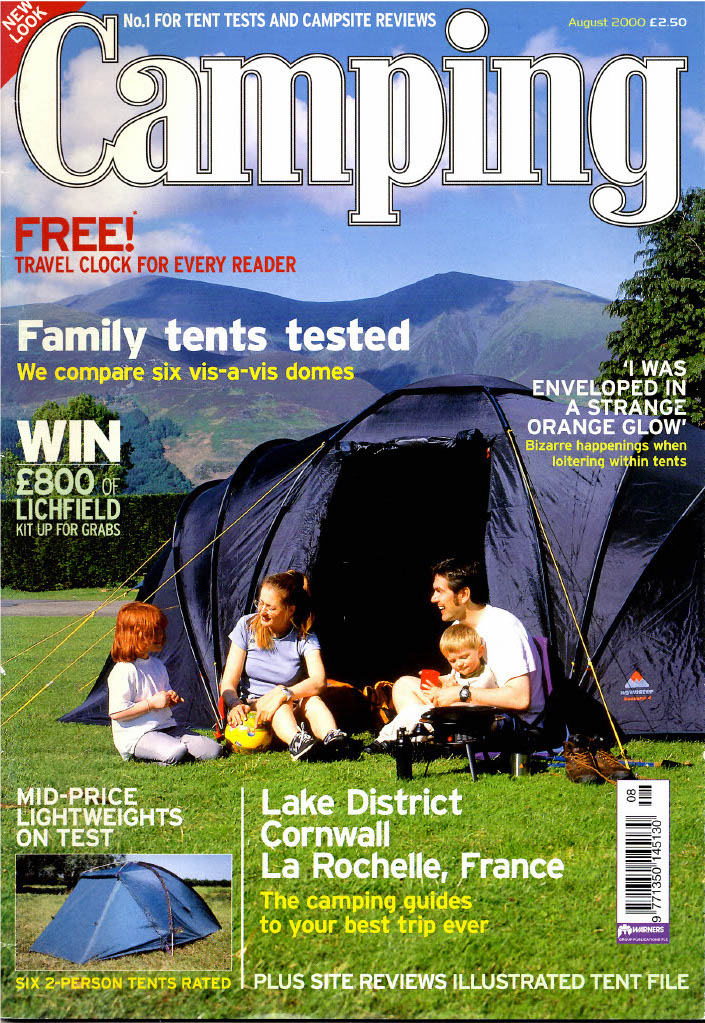
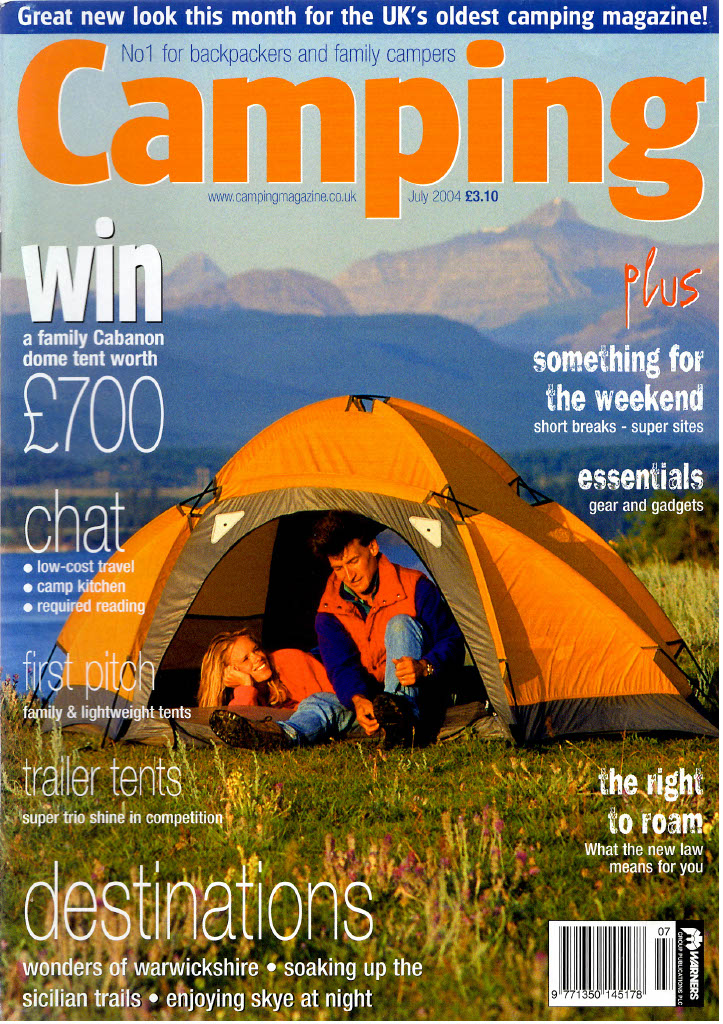

Tunnels were slowly coming onto the scene and that coincided with a move away from smaller tents. Family tents in all styles were starting to become hugely popular. Or just huge. As the editor of this very magazine pointed out: “In recent years there has been a tendency for campers to think small and compact, but there does seem to be a bit of a wind-change taking place. Several manufacturers now offer 12-berth family dome tents and there are even one or two family tents with 15 and 16 berths!” The mind boggles…
And speaking of mind-boggling family camping, hats off to reader, Michele Walden and her husband. They wrote in to tell us about the wonderful camping holidays they were having with their kids… nine-year-old twin boys and five-year-old triplet girls. The phrase, “rather you than me” has never seemed more apt!
It makes a change for costs to go down while quality goes up, but that’s what was happening with tents in 2003. Outwell’s six-berth Hartford (a three-bed dome) cost £299, while Gelert’s top-of-the-range Satellite 6 Deluxe was on sale at £330. As Camping editor of the day, John Lloyd, said: “It’s fair to say there’s never been a better time to buy a tent.”
In the spring of 2003, Yeomans opened a new store in Northampton, taking the number of branches around the UK to 50. The new shop was a bit of a departure, featuring a display of more than 60 tents. Meanwhile, Sheffield-based retailer CCC was planning a new concept store in Coventry. Go Outdoors would open the following year.
In 2011 Vango launched the AirBeam range of inflatable tents, which have helped revolutionise camping and opened it up to so many more people.
Finally, how do you describe a tent that has a dome area for living/sleeping and a tunnel for storage? A “dunnel” apparently. I suspect this was the brainchild of the same stupid idiot who later dreamed up glamping and staycation. Or “stidiot” as they’d probably prefer to be called.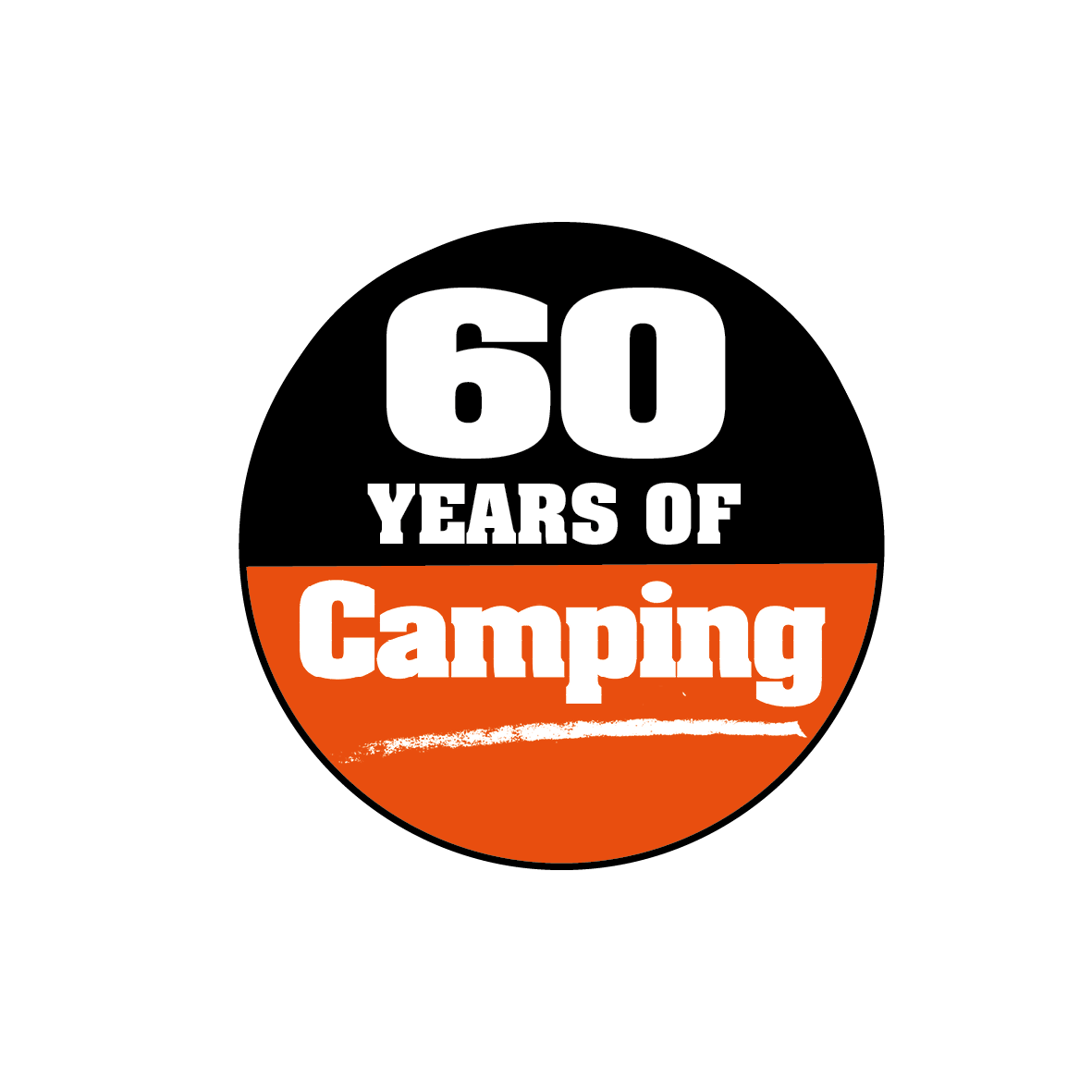






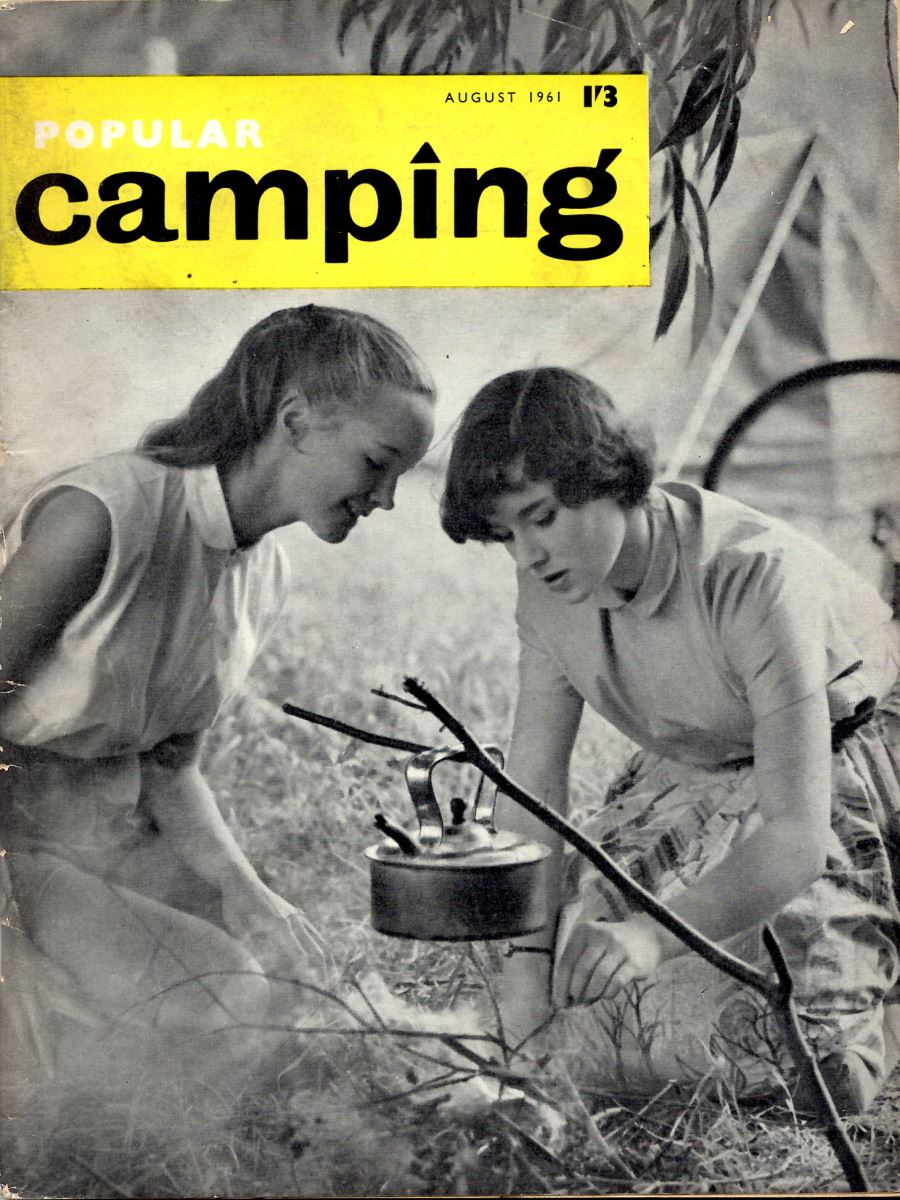
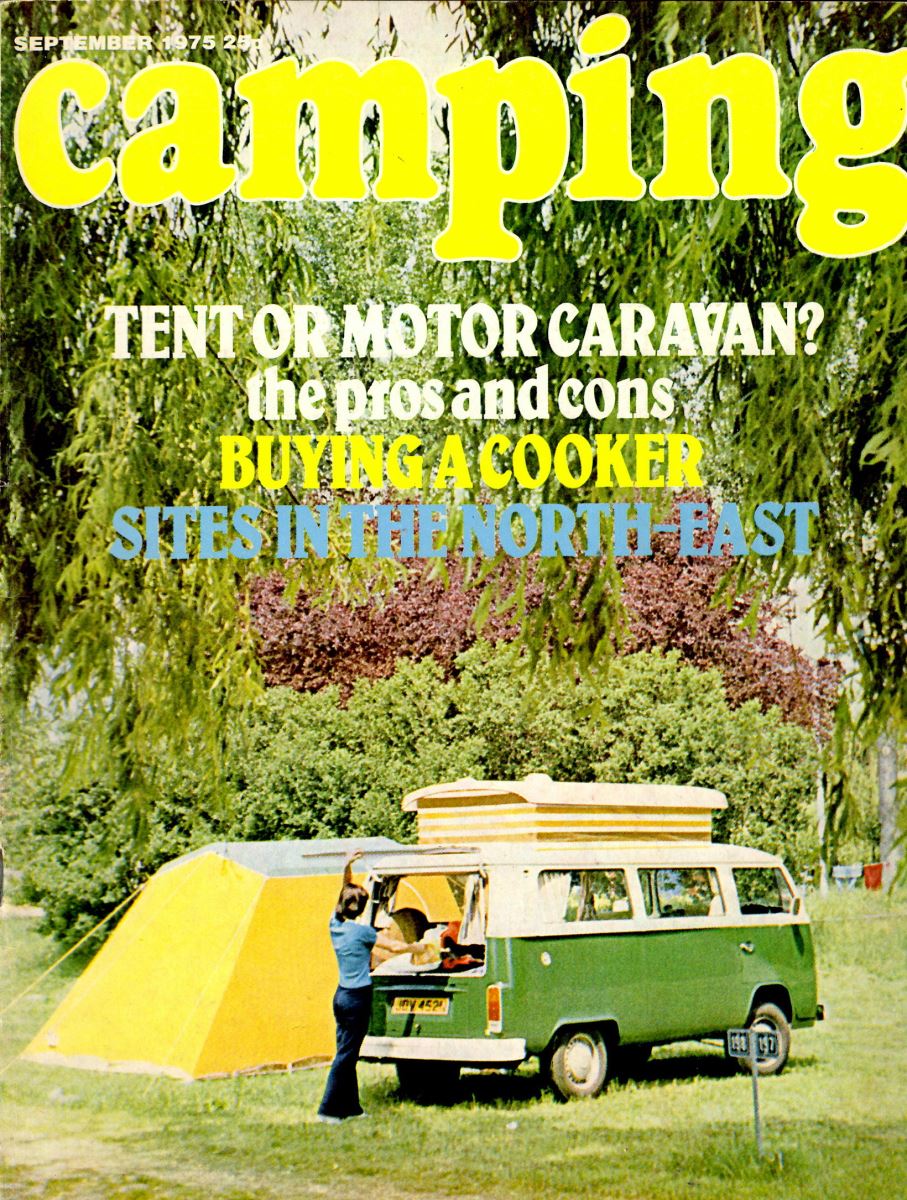
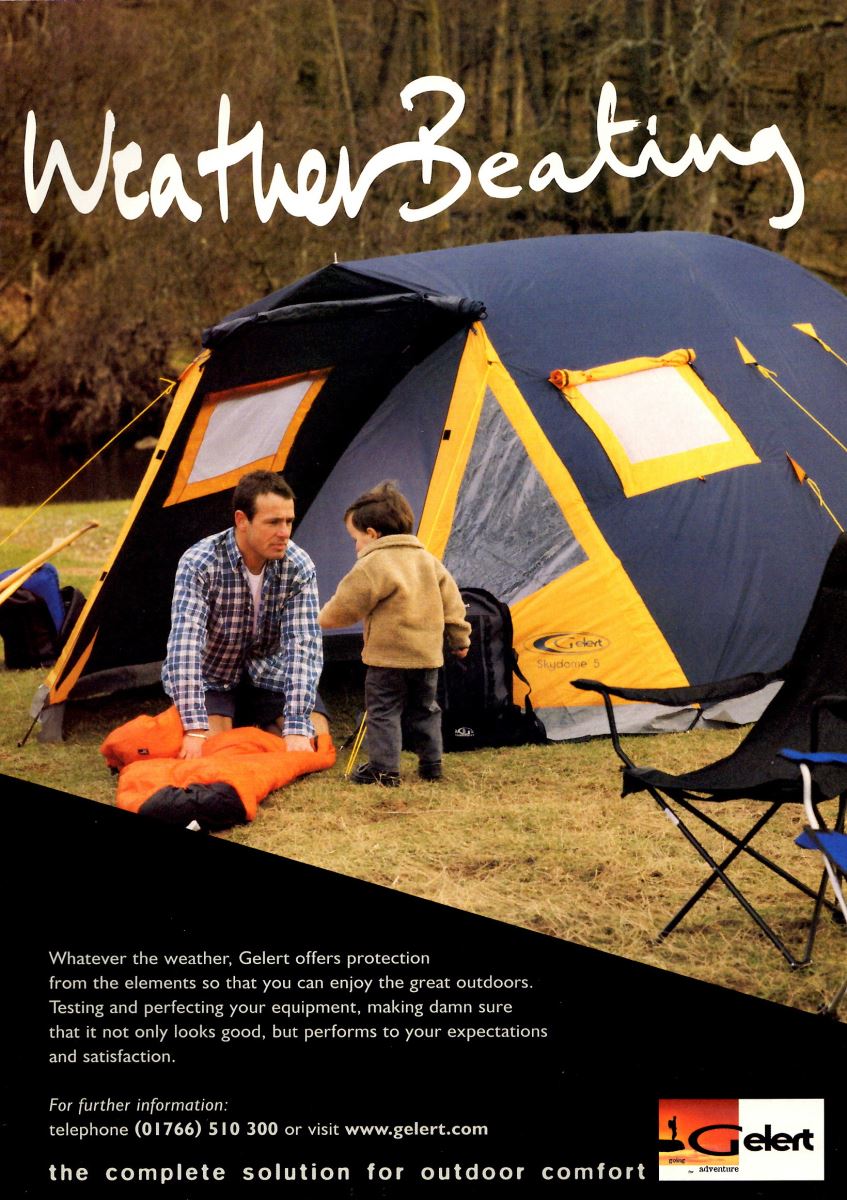
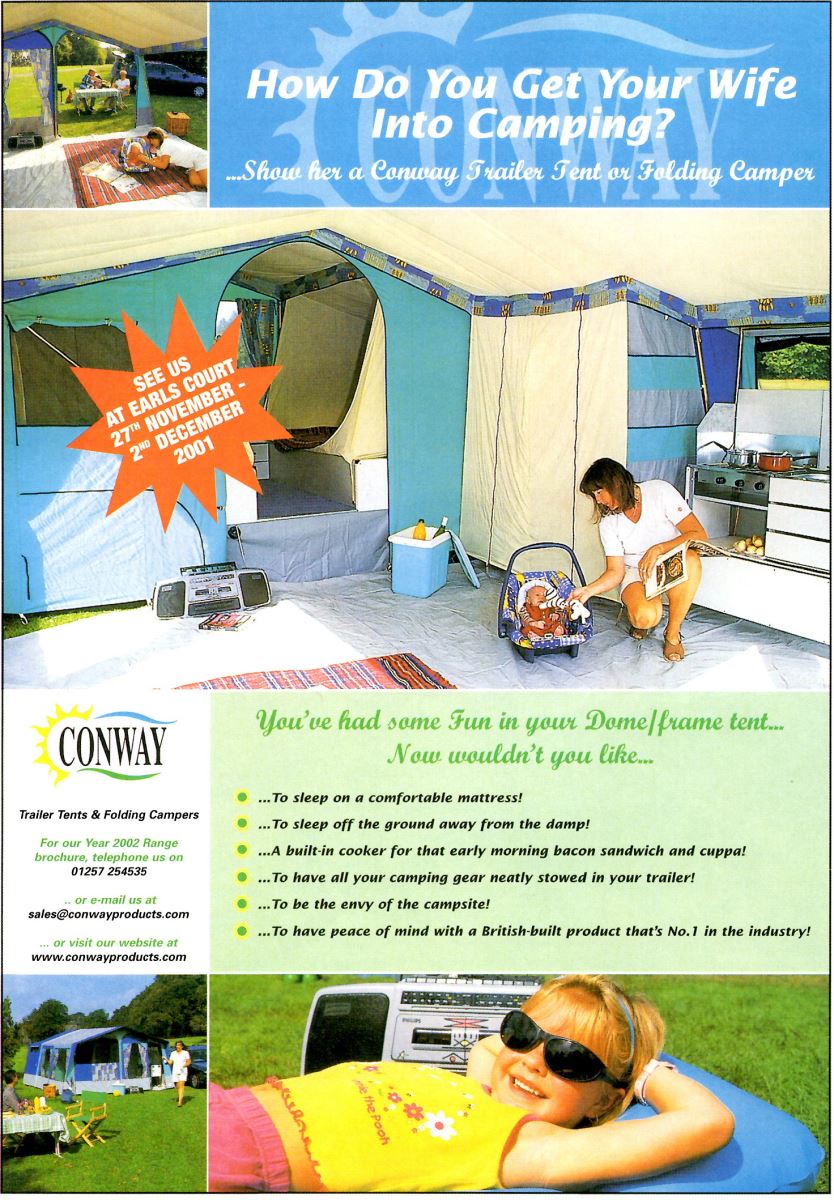
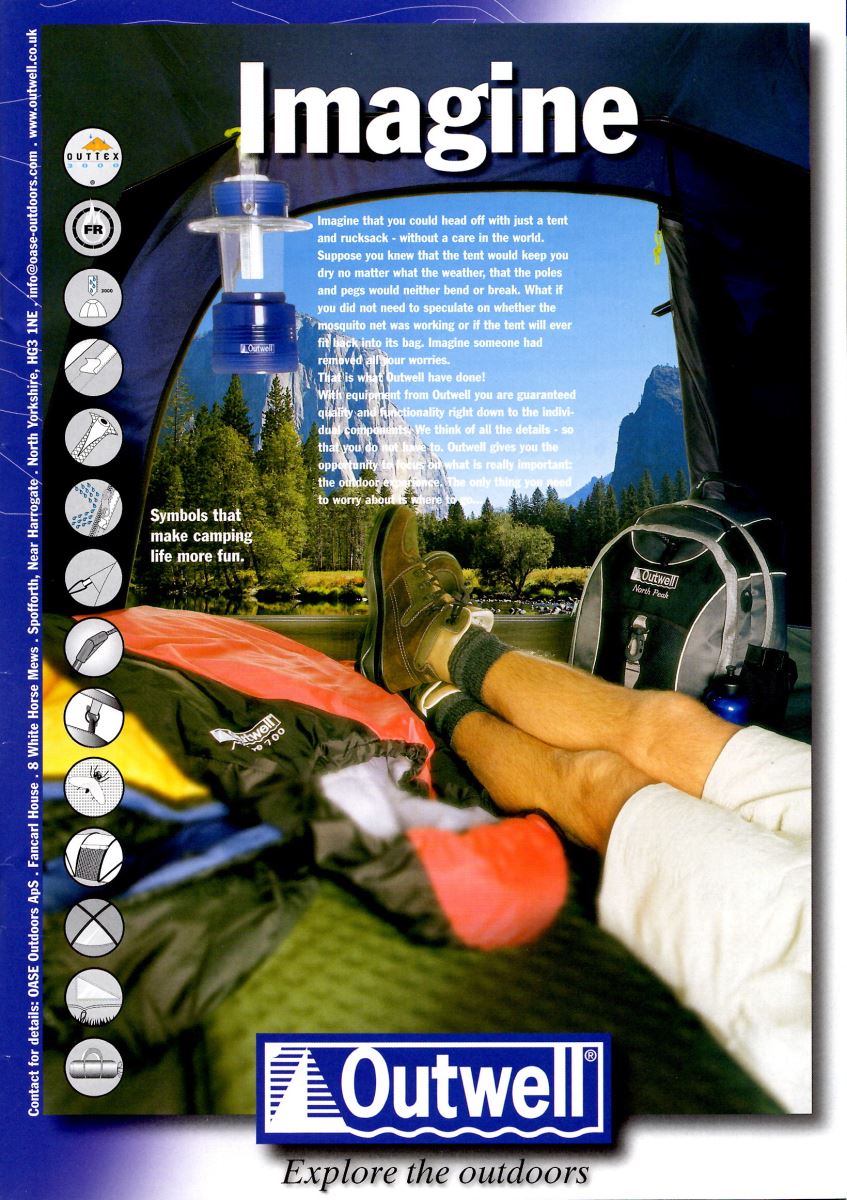


Recent Updates
Camping barbecue: our guide to cooking up a storm this summer
Is there anything more British than sausages grilled on an open flame and dropped on wet grass? Camping and barbecues go hand in hand, which is why ...
Our family camping checklist: everything you need to pack
Sure, you’ve packed the tent and the sleeping bags – but what about slip-on shoes and glow sticks? These are ...
Our guide to planning the perfect camping road trip
Roll down the window, pop on those shades and crank up the volume – it’s time for a road trip. Get ready for ...
Camping in Europe: our 12 top tips
If you’ve not camped in Europe before, there’s a few tips and tricks you’ll need to avoid some continental ...
Solar power for camping: all you need to know
Staying connected in the great outdoors is easier than ever with a solar charger – or is it? How reliable are ...
Wild camping kit list: everything you need for your next adventure
Make sure you’re ready for anything with this list of lightweight camping gear and clothing, including ...
Camping furniture: all you need to know to make your tent a cosy haven
We delve into the essentials of camping chairs, camping tables, and kitchen and bedroom furniture, ensuring ...
Camping lights for tents: What you need to know
We will guide you through all the lighting options available for you and your tent, including interior ...
Camping kitchen: all you need to know
In the great outdoors, a well-equipped camping kitchen transforms mealtime into a delightful adventure ...
How to pack away your camping gear for winter
A complete guide to packing and storing your gear at the end of the season ...
Other Articles
Camping guide to trailers
Trailer stash or trailer trash? Being able to carry lots of other gear when you go camping isn’t such a bad idea, is it? Nick Harding looks at the ...
Winter camping: all you need to know to keep warm
Winter doesn’t have to mean the end of the camping season. With good preparation and the right gear, there’s ...
Camping toilets: a complete guide
If you are wild camping, camping off-grid or the campsite you book onto doesn’t have toilet facilities, you ...
Top tips for camping in windy weather
How to make sure your tent stands up to gusty conditions ...
Camping tents: a complete guide
If you're considering buying a camping tent, whether it's your first time or you're a seasoned camper, making ...
Camping sleeping bags and beds: a complete guide
When it comes to camping, there's one essential item that can make or break your outdoor adventure: the ...
Camping gas: how to use gas on the campsite
A complete guide to using camping gas appliances safely on the campsite, from choosing the right stove to ...
Camping storage: a complete guide
Having problems knowing where to put all your gear when you're camping? Read our top tips and see some great ...
Camping electric hook-up: a complete guide
This is everything you need to know about using electricity on a campsite, including how to hook up ...
How to pack all your camping gear into your car
Planning a family camping holiday? Find out the best way to fit all the kit you need into your car boot, roof ...